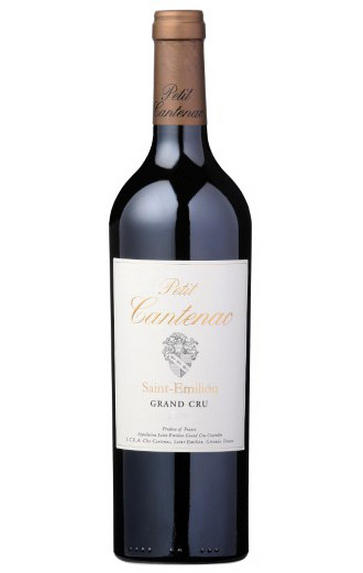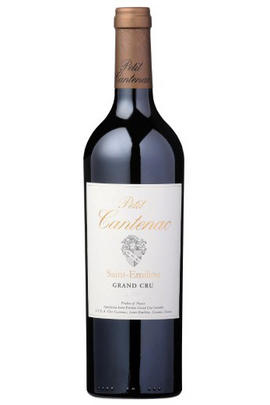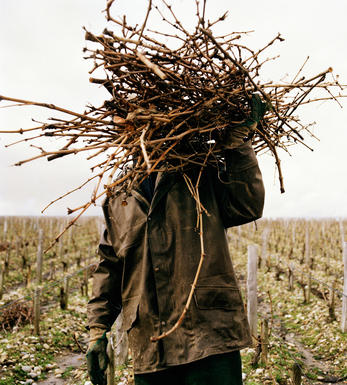
2022 Petit Cantenac, St Emilion, Bordeaux

Critics reviews
The 2022 Petit Cantenac has an attractive bouquet with raspberry coulis, crushed strawberry and black truffle scents. Dried herbs and curry leaf aromas emerge with time. The palate is velvety on the entry, with graphite-tinged red fruit mixed with black pepper and a dash of soy toward the slightly al dente finish. Moderate length. Delightful.
Drink 2027 - 2045
Neal Martin, Vinous.com (April 2023)
Deep garnet-purple in colour, it rolls out with evocative scents of redcurrant jelly, stewed cherries, and fruitcake, followed by wafts of sautéed herbs and fallen leaves. The medium to full-bodied palate has plenty of juicy fruit with a soft texture and just enough freshness, finishing with a herbal lift.
Drink 2026 - 2040
Lisa Perrotti-Brown MW, The Wine Independent (May 2023)
Black pepper spice on the opening here, touch of reduction, which softens to show fresh mushroom, baked earth, raspberry, redcurrant and mirabelle plum. 45hl/h yield, harvest began September 6 for two weeks. Final blend done in March. 300l barrels for ageing, plus some amphora. Charlotte Krajewski winemaker at this great quality St Emilion.
Drink 2025 - 2032
Jane Anson, JaneAnson.com (May 2023)
80% Merlot, 15% Cabernet Franc, 5% Cabernet Sauvignon. Cask sample.
Pretty, fragrant wine. Already appealing, the texture supple, the tannins light but fine. Sufficient freshness. Well judged and not overplayed.
Drink 2025 - 2032
James Lawther MW, JancisRobinson.com (May 2023)
Very pretty ripe raspberry, strawberry and creamy vanilla, spicy pepper and gunsmoke touches on the nose, smells fresh and super pretty, quite aromatic and floral with dark chocolate too. Its lovely chalky texture, and the tannins, although super fine, make the first impression, really coating the mouth, giving a softness, gently bouncy and plush texture that is just so appealing.
Red fruit intensity, sharp, forward, open, exciting and really easy to approach and enjoy. Lovely crushed chalk texture towards the end. Easy to like and very drinkable
Georgina Hindle, Decanter.com (May 2023)
Very much more forward, juicy and ripe than in years gone by, this wine is stylish, open-armed, charming and refreshing. It will drink beautifully from a young age and keep well, too, thanks to its devastatingly pure backbone of silky tannins and prickly acidity. The red-fruited theme differs from its parent wine, making it a jolly, generous, refined fellow with a glorious floral nose and a gleamingly bright palate.
Matthew Jukes, Money Week (May 2023)
About this WINE

Clos Cantenac
Clos Cantenac is a 3 hectares wine property with vines planted on a combination of deep gravel, sand and clay over limestone soils.
It is situated close to the pre-historic "Megalith de Pierrefitte" in the Saint Emilion wine appellation and it was purchased in 2007 by Martin Krajewski, the owner of Chateau de Sours. The property is is run by Krajewski on the helm along with wine enthusiast Marcus Le Grice from New Zealand and Sebastien Lamothe, Oenologist and Technical Director of Chateau de Sours.

St Émilion
St Émilion is one of Bordeaux's largest producing appellations, producing more wine than Listrac, Moulis, St Estèphe, Pauillac, St Julien and Margaux put together. St Emilion has been producing wine for longer than the Médoc but its lack of accessibility to Bordeaux's port and market-restricted exports to mainland Europe meant the region initially did not enjoy the commercial success that funded the great châteaux of the Left Bank.
St Émilion itself is the prettiest of Bordeaux's wine towns, perched on top of the steep limestone slopes upon which many of the region's finest vineyards are situated. However, more than half of the appellation's vineyards lie on the plain between the town and the Dordogne River on sandy, alluvial soils with a sprinkling of gravel.
Further diversity is added by a small, complex gravel bed to the north-east of the region on the border with Pomerol. Atypically for St Émilion, this allows Cabernet Franc and, to a lesser extent, Cabernet Sauvignon to prosper and defines the personality of the great wines such as Ch. Cheval Blanc.
In the early 1990s there was an explosion of experimentation and evolution, leading to the rise of the garagistes, producers of deeply-concentrated wines made in very small quantities and offered at high prices. The appellation is also surrounded by four satellite appellations, Montagne, Lussac, Puisseguin and St. Georges, which enjoy a family similarity but not the complexity of the best wines.
St Émilion was first officially classified in 1954, and is the most meritocratic classification system in Bordeaux, as it is regularly amended. The most recent revision of the classification was in 2012

Cabernet Sauvignon Blend
Cabernet Sauvignon lends itself particularly well in blends with Merlot. This is actually the archetypal Bordeaux blend, though in different proportions in the sub-regions and sometimes topped up with Cabernet Franc, Malbec, and Petit Verdot.
In the Médoc and Graves the percentage of Cabernet Sauvignon in the blend can range from 95% (Mouton-Rothschild) to as low as 40%. It is particularly suited to the dry, warm, free- draining, gravel-rich soils and is responsible for the redolent cassis characteristics as well as the depth of colour, tannic structure and pronounced acidity of Médoc wines. However 100% Cabernet Sauvignon wines can be slightly hollow-tasting in the middle palate and Merlot with its generous, fleshy fruit flavours acts as a perfect foil by filling in this cavity.
In St-Emilion and Pomerol, the blends are Merlot dominated as Cabernet Sauvignon can struggle to ripen there - when it is included, it adds structure and body to the wine. Sassicaia is the most famous Bordeaux blend in Italy and has spawned many imitations, whereby the blend is now firmly established in the New World and particularly in California and Australia.


Buying options
Add to wishlist
Description
The 2022 Petit Cantenac has an attractive bouquet with raspberry coulis, crushed strawberry and black truffle scents. Dried herbs and curry leaf aromas emerge with time. The palate is velvety on the entry, with graphite-tinged red fruit mixed with black pepper and a dash of soy toward the slightly al dente finish. Moderate length. Delightful.
Drink 2027 - 2045
Neal Martin, Vinous.com (April 2023)
wine at a glance
Delivery and quality guarantee